The EC 175 is one of four (4) direct Eurocity train services connecting Berlin, the capital of Germany, and Prague, the capital of the Czech Republic. This Eurocity service is the highest tier train service on the route, and runs daily between Berlin Hauptbahnhof and Prague Central Station (Praha hlavní nádraží) with a scheduled travel time of 4 hours and 24 minutes.
I had the opportunity of travelling on EC 175 in 2nd class in January 2017. At the time, the service was named “Robert Schumann” after the famous German composer. It departed Berlin at 1:03 pm and arrived in Prague at 5:27pm.
Today, the EC 175 has been renamed to “Berliner”, and now departs Berlin at 1:16pm with a scheduled arrival in Prague at 5:35 pm – a scheduled travel time of 4 hours and 19 minutes.
First posted 25 May 2017. Updated 6 February 2023.
Jump to section
Booking my ticket
The EC 175 is jointly operated by Deutsche Bahn (DB) and Czech Railways (České dráhy). Tickets can be purchased either from the DB website or from the ČD website.
I bought my discounted “Sparpreis Europa” tickets for €19.90 on the DB website. Owing to the projected lower demand on the service, I opted to save some money by not reserving a seat onboard.
2023 Update: I had the opportunity to take this exact same route later in the summer of 2017. The train was packed, and without a seat reservation you'll have to hunt up and down the train set for a free seat. I recommend paying the €4.50 for a seat reservation if you're travelling in the summer, or during any projected high demand times.
Departure experience at Berlin Hauptbahnhof
Berlin Hauptbahnhof is probably the most unique train station I’ve ever been to. It’s architecture is defined by its location at the crossroads of the city’s North-Southbound railway line and East-West lines. It is also well connected to the public transit network, with connections available via S-Bahn, the trams, and the stubby U55 U-Bahn line.
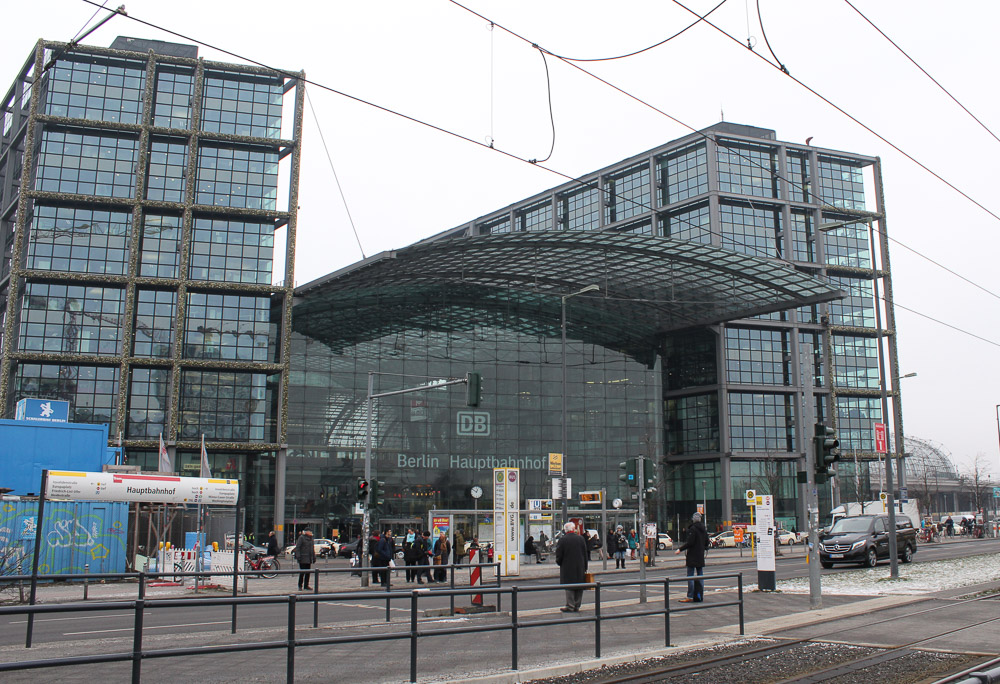
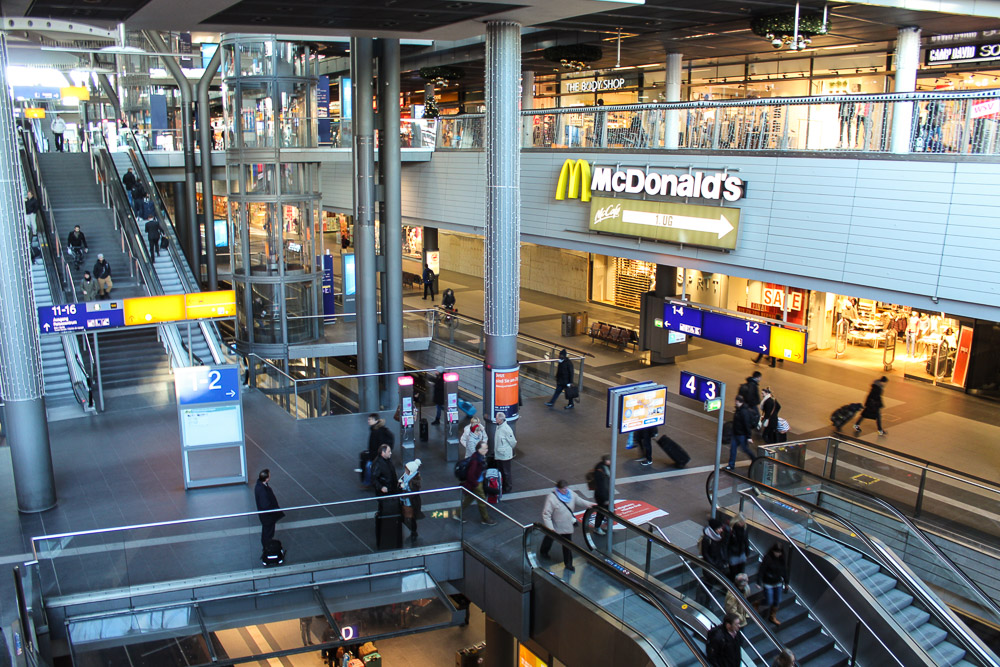
2023 Update: The U55 is no more, and has been integrated with the U5 extension since 4 December 2020. The Hauptbahnhof is now directly connected to Unter den Linden, Berlin Mitte, Alexanderplatz and beyond to Friedrichsfelde and Hönow. Much better than the odd little U55 that only ran between the Hauptbahnhof and Brandenburger Tor.
The EC 175 was scheduled to depart from the subterranean North-South platforms. The grey ultramodern decor and harsh fluorescent lighting reminded me of the basement level KTM Komuter platforms in KL Sentral, except these were airier and better taken care of than their Kuala Lumpur counterparts.
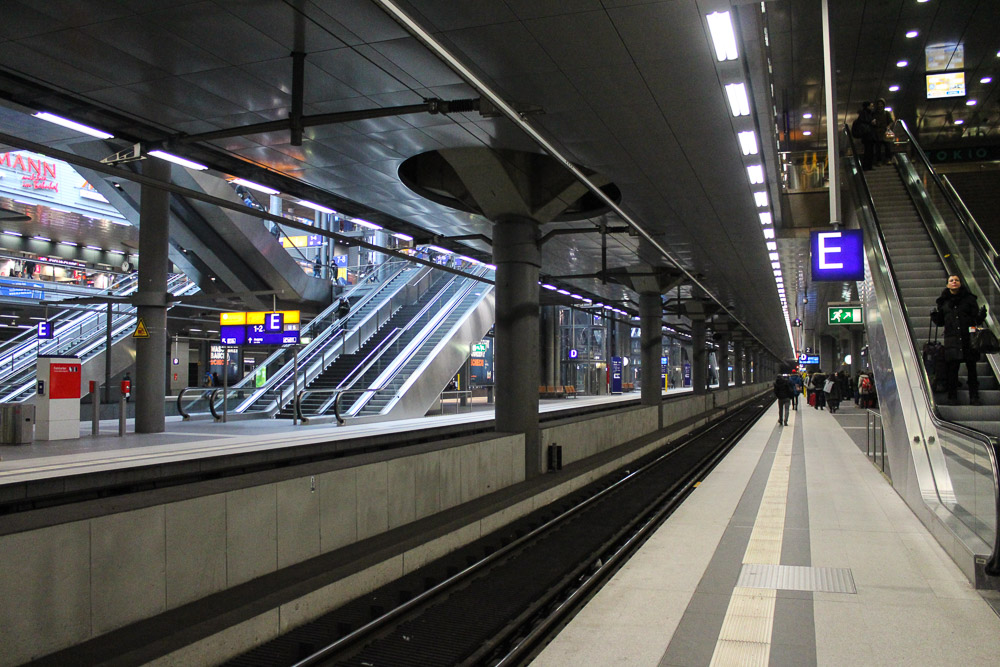
The train was a locomotive drawn consist, hauled by a Deutsche Bahn locomotive but composed entirely of ČD coaches.
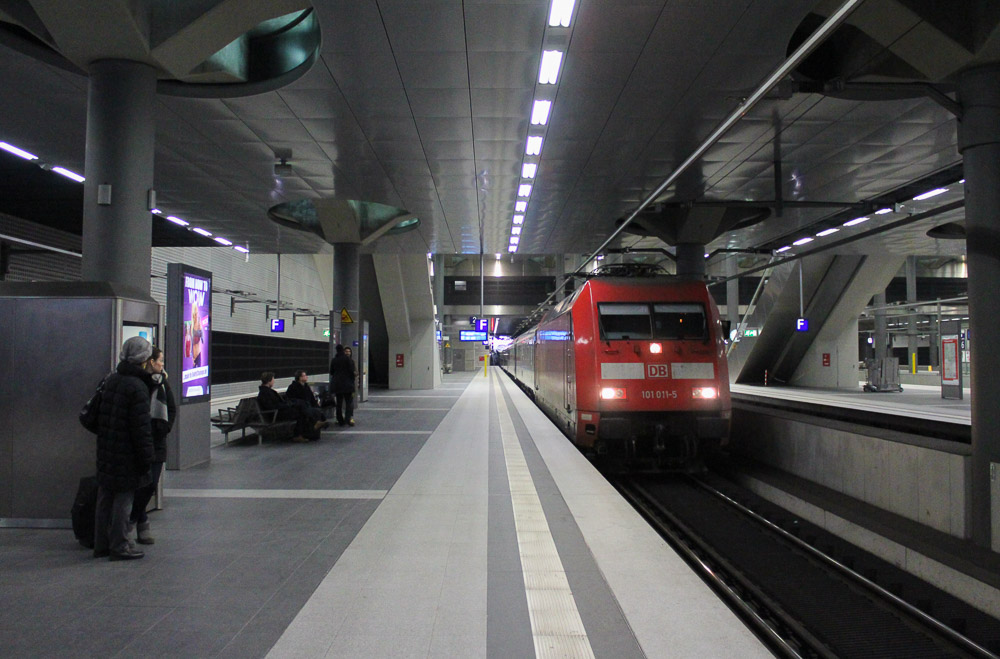
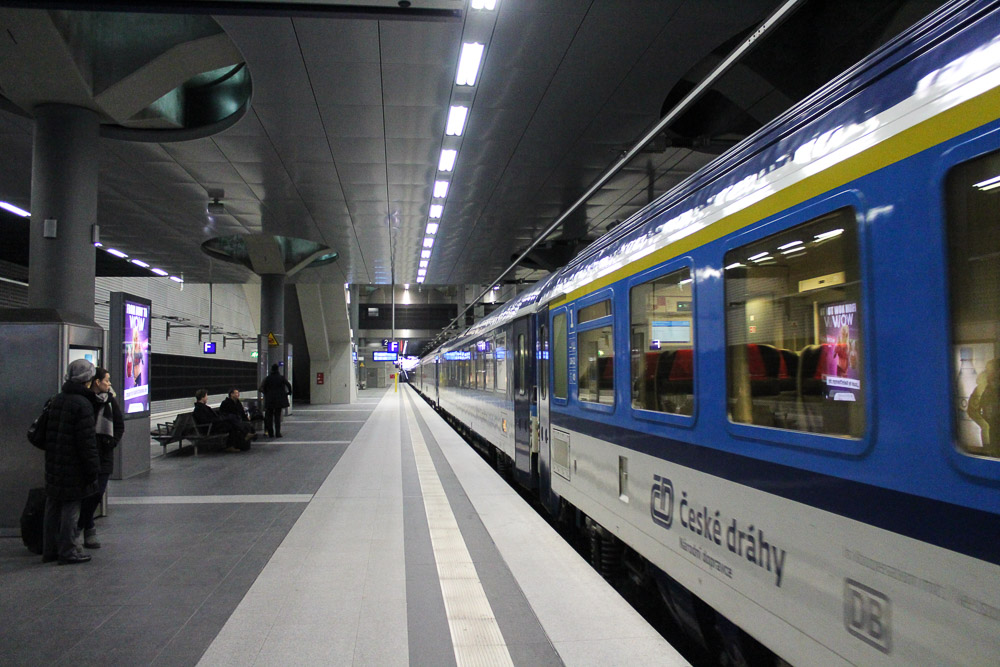
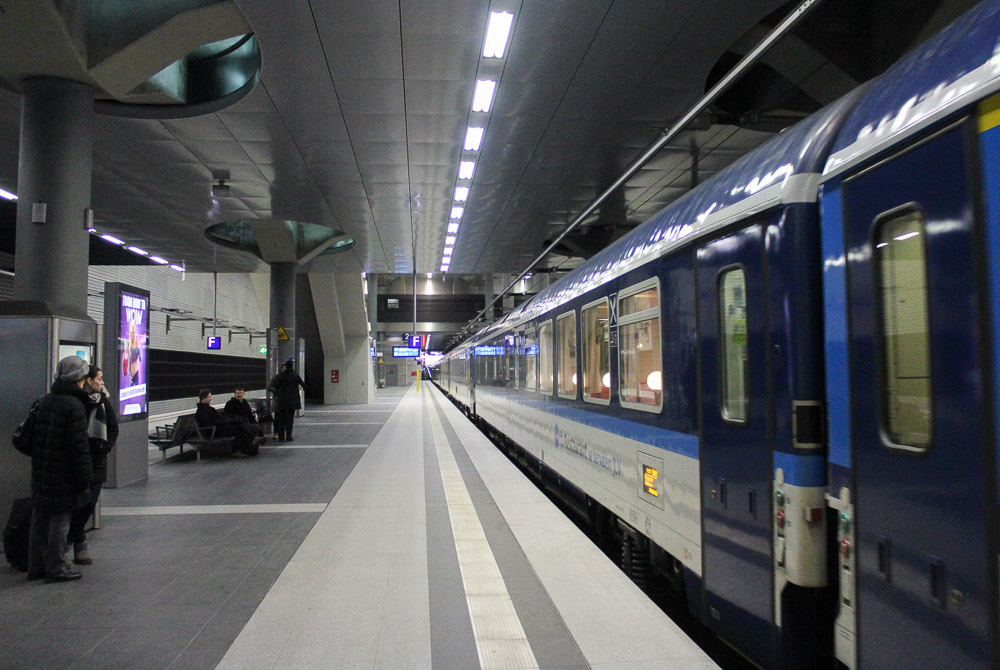
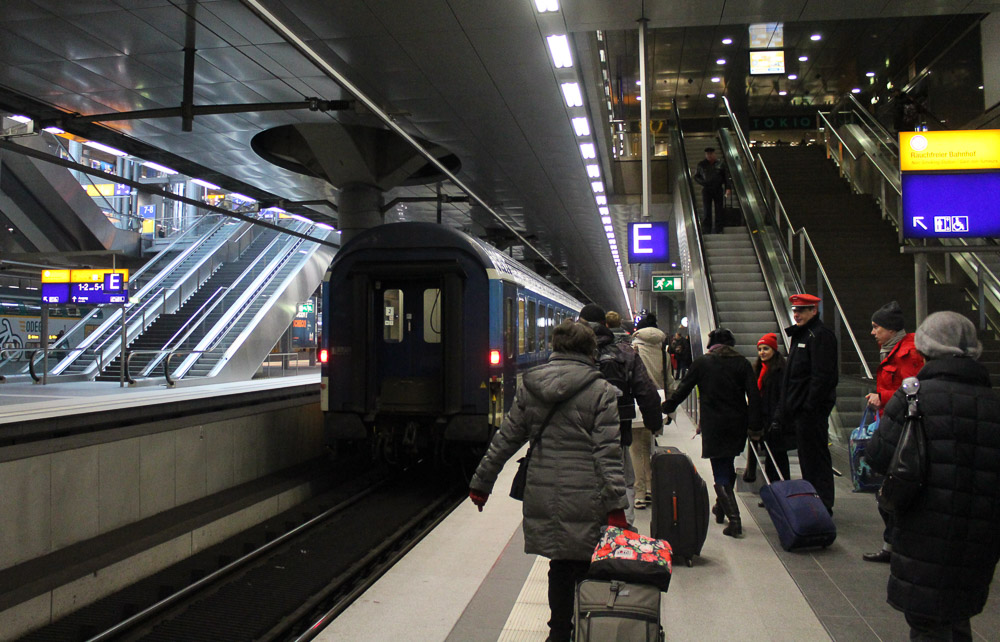
We departed Berlin on time, and soon we were zooming past the east German countryside southwards.
Cabin & Onboard Amenities
The coaches on this service were modern, and a far cry from the older loco-hauled trains that I was used to in Southeast Asia. All coaches featured an LCD screen that displayed train and route information, including speed and the upcoming stops.

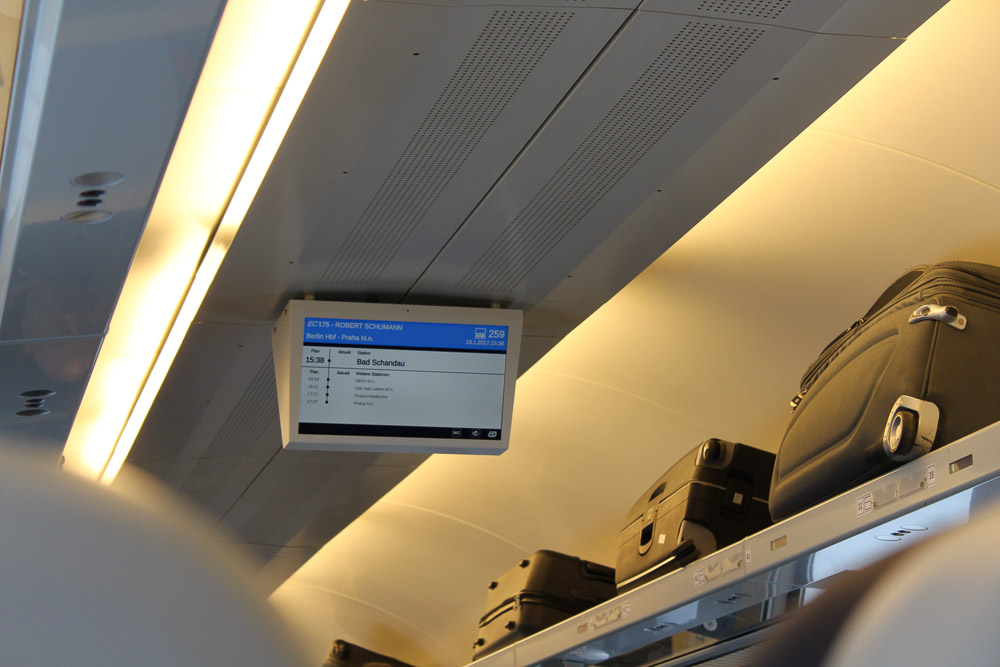
I liked how airy the coaches were. It didn’t feel constricting at all like some of the other longer distance train sets I had been on up until that point – (Virgin Trains’ Super Voyager comes to mind). Gangway connections were also fully enclosed with sliding doors, and were well insulated from the cold outside.
The 2nd Class seats
The 2nd class interior onboard was composed of coaches with an open plan seating area more akin to airplanes, and coaches with compartments that were a bit more “classic”.
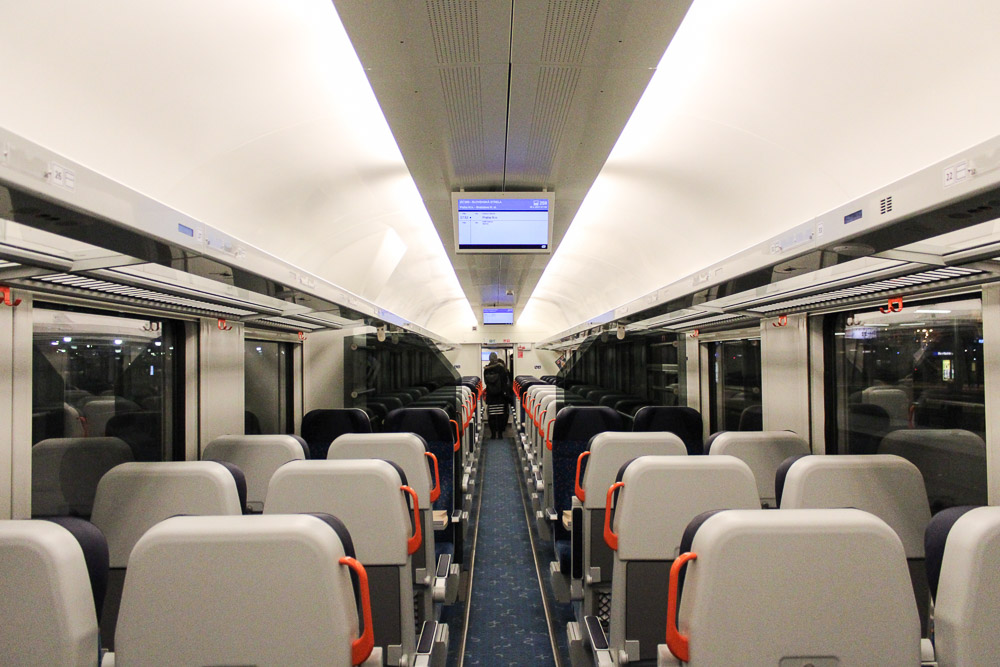
I was sat in an open plan coach with the 2nd class seats arranged in a 2-2 layout. The seats were in good condition, have decent legroom, and have 230V power sockets, but the one downside is that they have no recline. This is pretty common on European trains, so its just something to get used to.
There are luggage racks above the seats, and some dedicated space for bigger items at certain spots in the coach. If you’re travelling with a bicycle, one of the coaches will have a dedicated space for them. If in doubt, just ask the staff onboard.
Onboard Amenities – Wi-Fi
The train has Wi-Fi onboard, which is useful for getting work done or staying connected with the outside world without burning through your mobile plan.
The downside, as me and a fellow confused passenger discovered, is that the Wi-Fi only works properly in Czech territory. This isn’t stated clearly onboard the train, but just a month ago I had taken a cross-border DB ICE service from Amsterdam to Cologne (Köln) which did spell out the limitations of the Wi-Fi. My inference turned out to be correct, as my notifications started pouring in the moment our train crossed the Czech border.
Onboard Amenities – The Toilets
There are toilets aboard every coach. They were kept clean throughout the journey – nicely done!

I tried taking wide-angle view of a toilet by using the panorama feature on my then new iPhone 5S. It didn’t turn out so well, but rest assured that the toilets onboard look better than in the picture.
Onboard Catering
All Eurocity services have a dining car attached to the train set. This one was no different. There is a choice of hot food, drinks, or snacks. You can also take your snack and drinks order back to your seat, but hot food works best if you take a seat in the dining car.
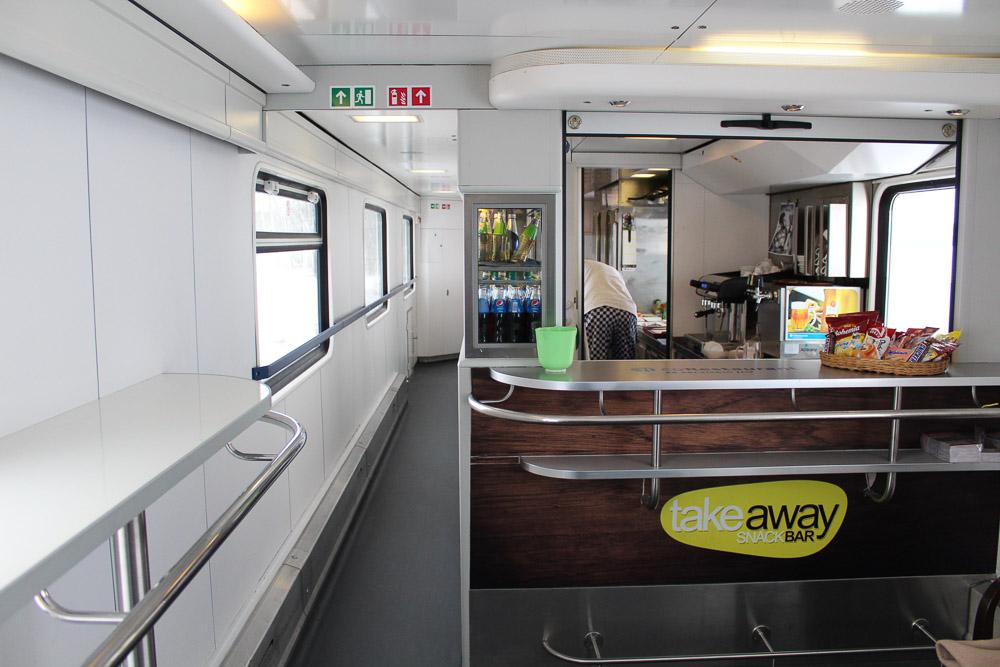
Checking out the Dining Car
The dining car was smartly designed in a modern style – far from the opulence usually associated with dining on the intercity trains of old. It was nicely decorated, with round bulbous lamps on each table. The tables were laid with tablecloths and napkins, and had big windows which guaranteed good illumination and views of the passing scenery.


This was the high point of the train ride so far – I’d certainly take eating in a dining car on a train any day over a regular restaurant.
My experience with the dining car was a bit rough at the start. I stood at the counter and asked the chef for a menu. He brusquely said “Yes we have food”, came out of the kitchen and without so much of a glance directed me down the car to a table.
It felt a bit dismissive, but at the same time feeding multiple people at once isn’t a very relaxing job. Most importantly though, he did give me my menu, but upon seeing my camera he promptly said “no pictures”.
I didn’t want to cause any trouble, so I snuck some quick pictures of the dining car with my phone. The quality, as you’d expect, isn’t up to par.
The food was priced averagely for onboard food, though not at a rate I would consider for a daily lunch. As I wasn’t sure about the quality I decided to go with Goulash – something simple and traditional enough for the region. Not only was it the cheapest item on the menu, but any hot soup or stew was very welcome in winter.
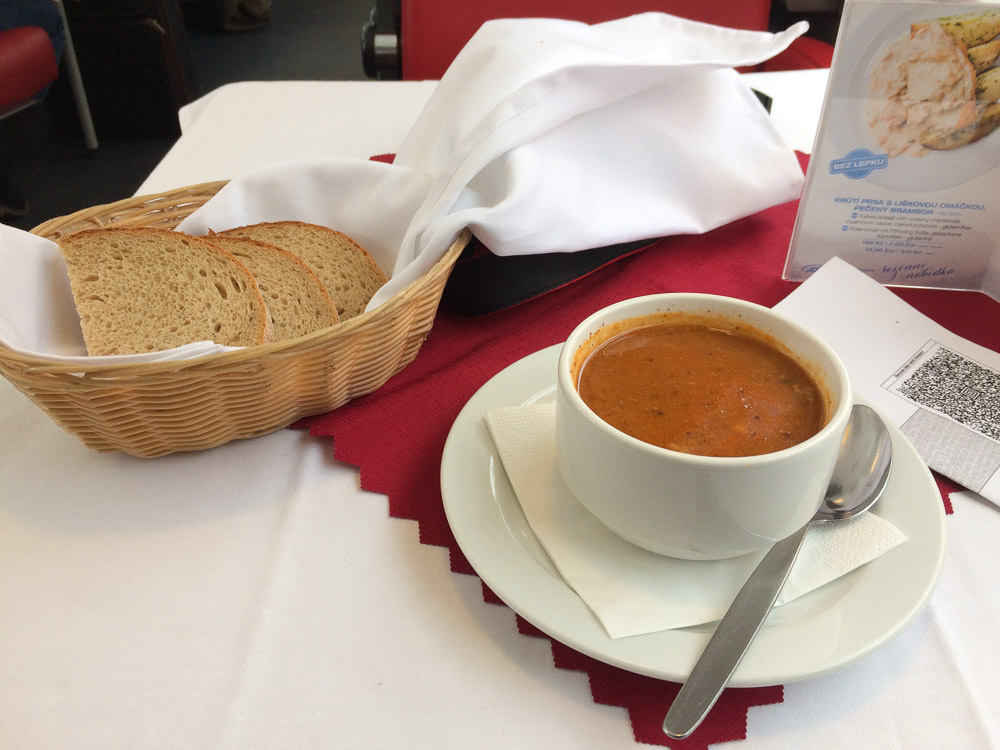
The Goulash came in a small bowl with 3 pieces of sourdough bread. I’m usually not a fan of sourdough bread because they’re a bit dry, but they worked alright with stew.
The Goulash itself was great. It was my first Goulash and I was already in love with it. I later tried cooking it (unsuccessfully) using a recipe I got in Berlin and ended up with portions enough to feed six.
I was reluctant to leave the dining car as it was a much more pleasant space than my seat. There was something about the whole experience that was very attractive. I’d blame pop culture for giving me this romantic idea of intercity train travel, but I won’t dispute the charm that the real thing has.
Dining cars are a throwback to a time when train travels took longer than today’s high speeds, and so a proper dining service made a lot of sense. Today’s intercity services are much faster and don’t usually require a full meal, making it more common to see trolley services or a simple bistro instead onboard, so a proper dining experience on a train was still very much a special one.
What exactly is “Eurocity?”
It may sound surprising to many, but intercity rail travel in the EU is actually centrally regulated and legally defined.
Eurocity, for example, is one step higher than “Intercity”, and has to fulfill several criteria for it to be considered as such. A few of those criteria are –
- Air conditioned cars
- Stops at major cities only
- Food and beverages onboard (Preferably from a dining car)
- Average speed of 90km/h
Most Eurocity routes also carry names as a throwback to the older days when express trains had names too. Mine, for example, was named after the composer Robert Schumann, and specifically refers to the 1:03 pm service from Berlin to Prague, stopping at only 8 stations including Dresden, Bad Schandau, Ústi nad Labem, and of course, Prague.
The view outside
The track alignment out of Berlin and through eastern Germany took us through wintery and snowy fields. It was quite the sight to see, especially as this was my first real look at snowy scenery.
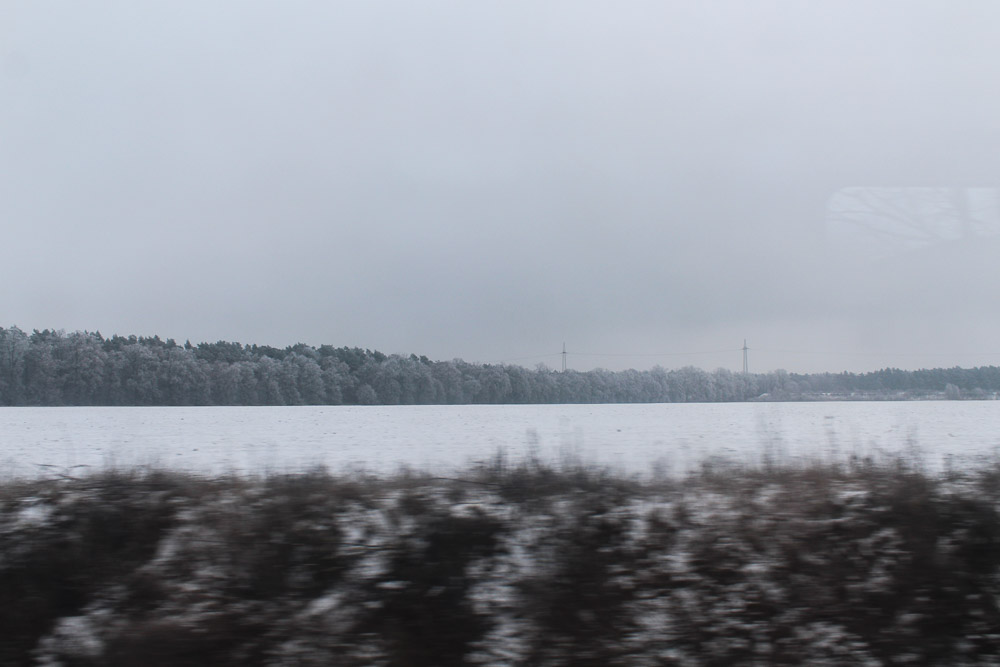
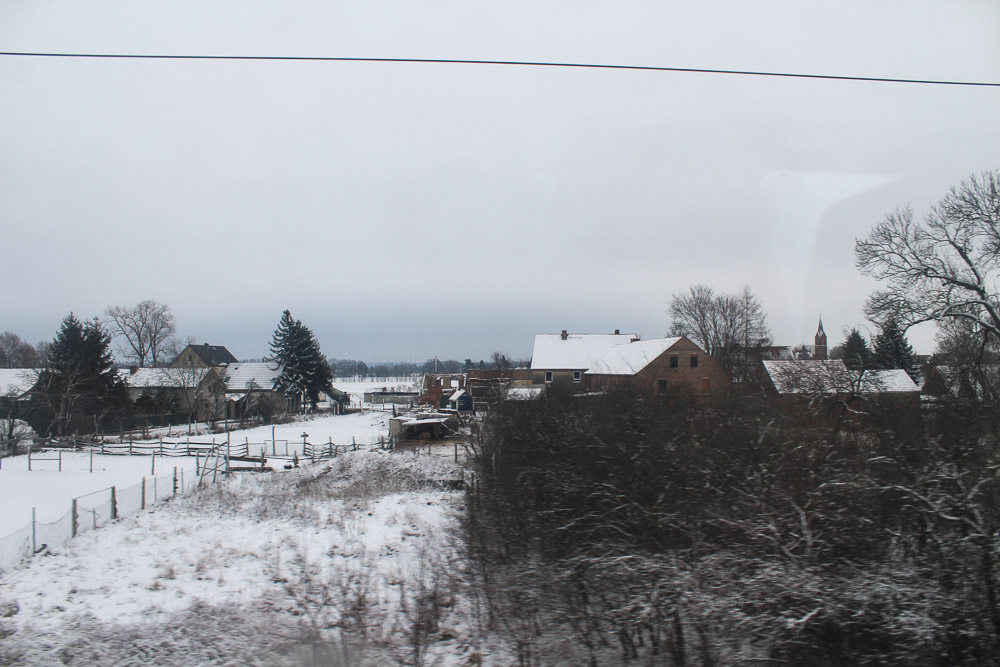
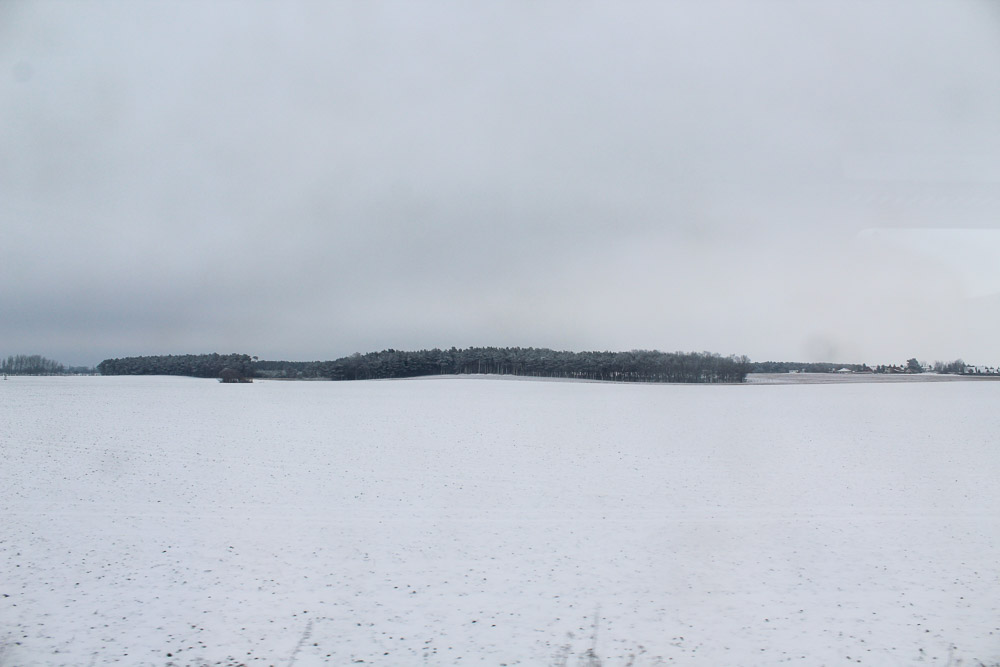
Our train also stopped at Dresden, though we couldn’t see much of the city from our vantage point.
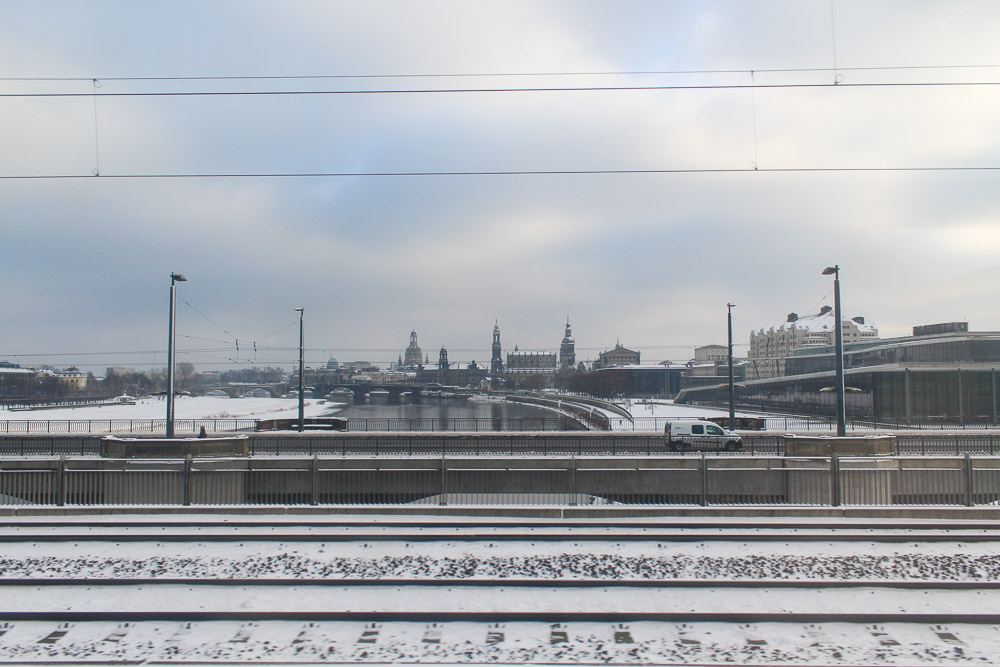
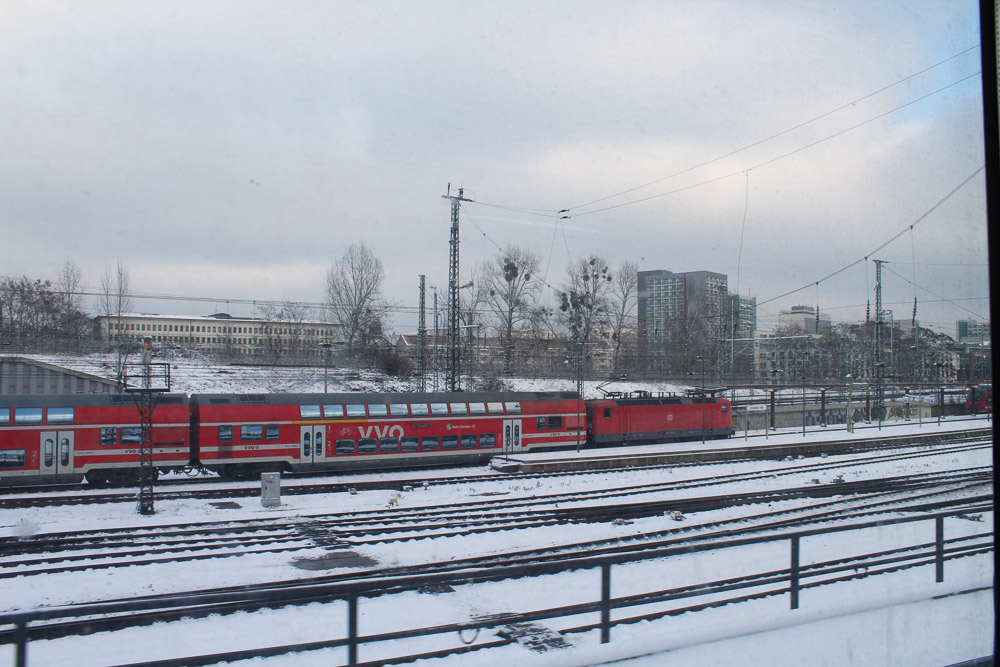
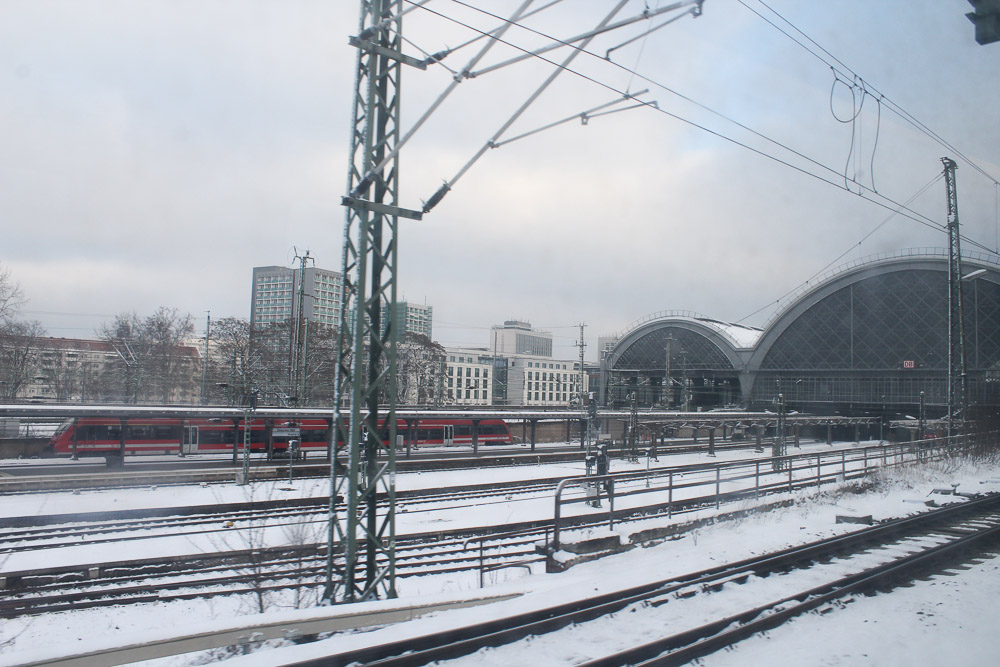
A highlight of the journey was when we passed through Bad Schandau. Located in the German state of Sachsen near the Czech border, it is the last stop before entering Czech territory. Bad Schandau is a spa town by the River Elbe, and a very small one too. The tracks and train station are located on the other side of the Elbe across from the town centre itself, and the tracks themselves run along the Elbe right after passing Pirna station. This guarantees great views of the natural features on the northern banks of the Elbe on approach to Bad Schandau, the beauty of which is amplified in the snowy winter.
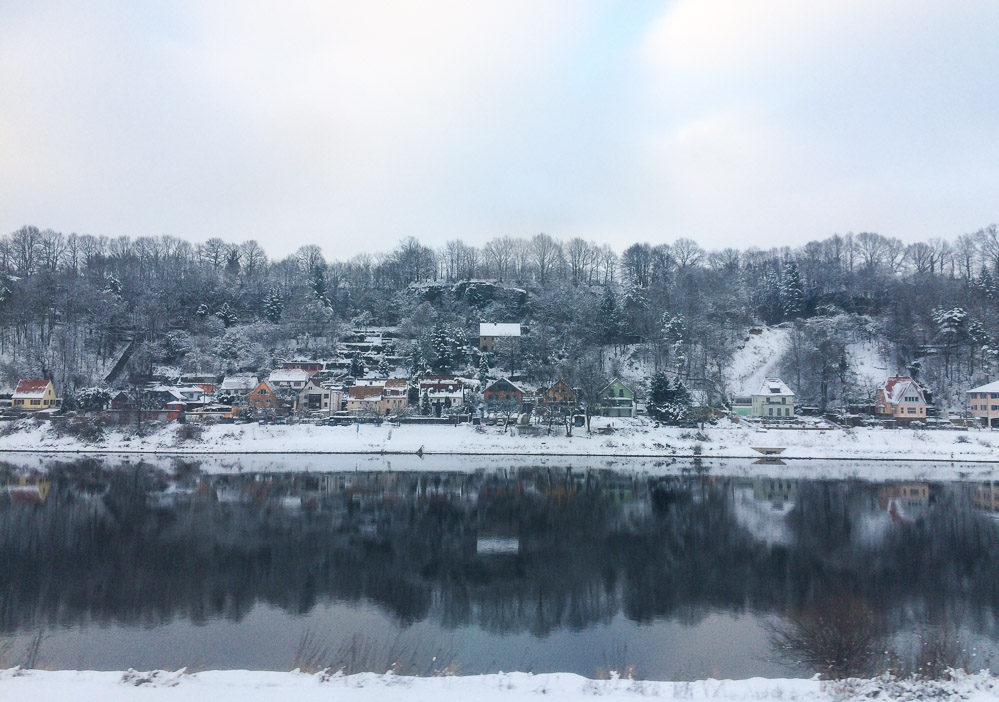
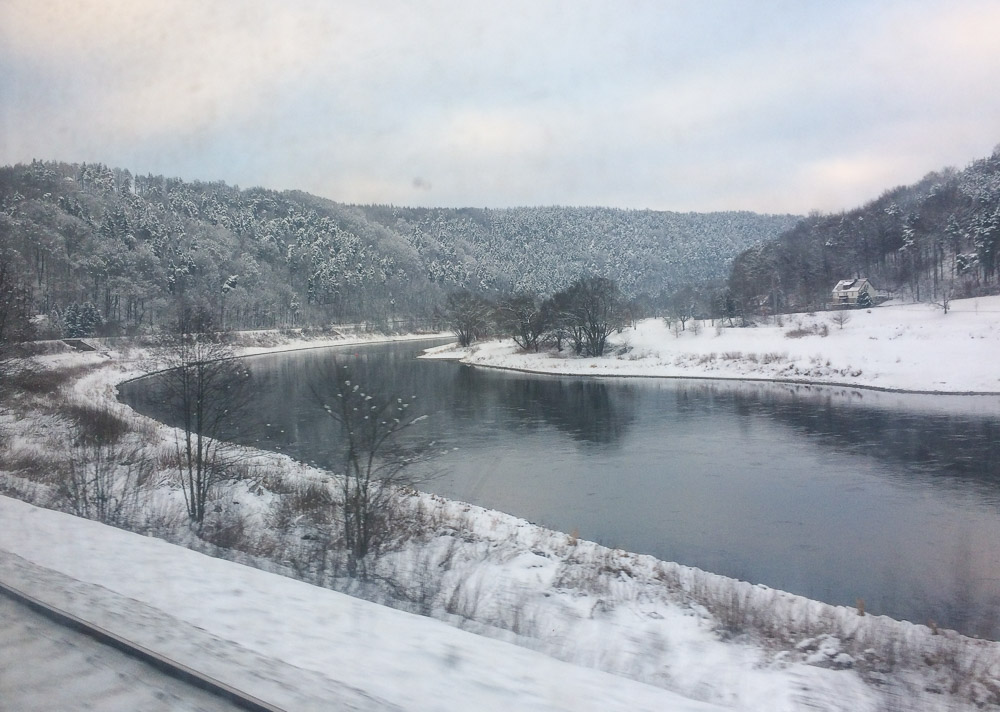
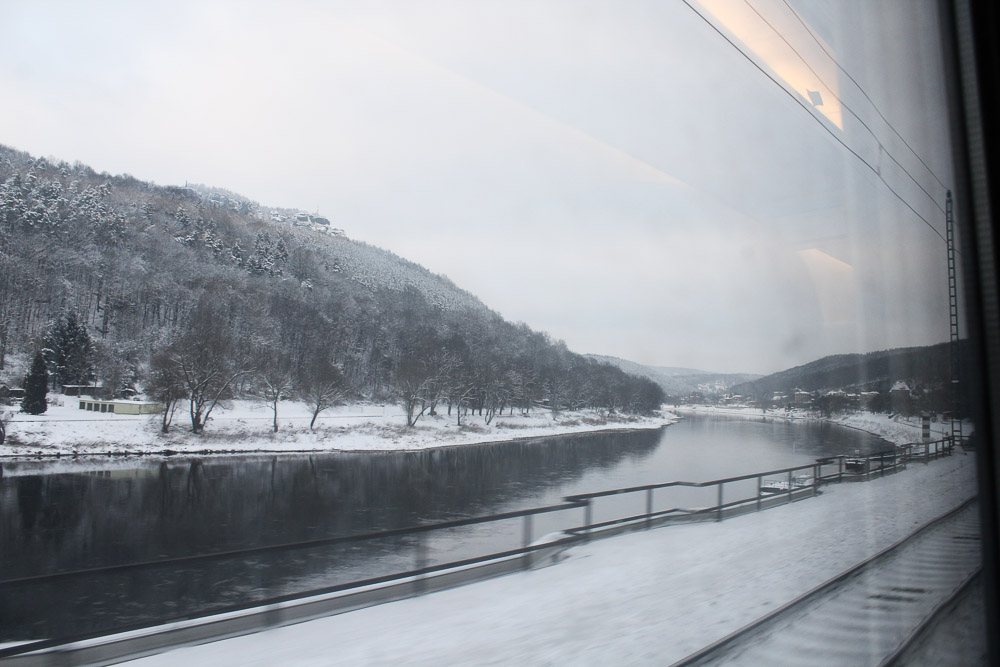
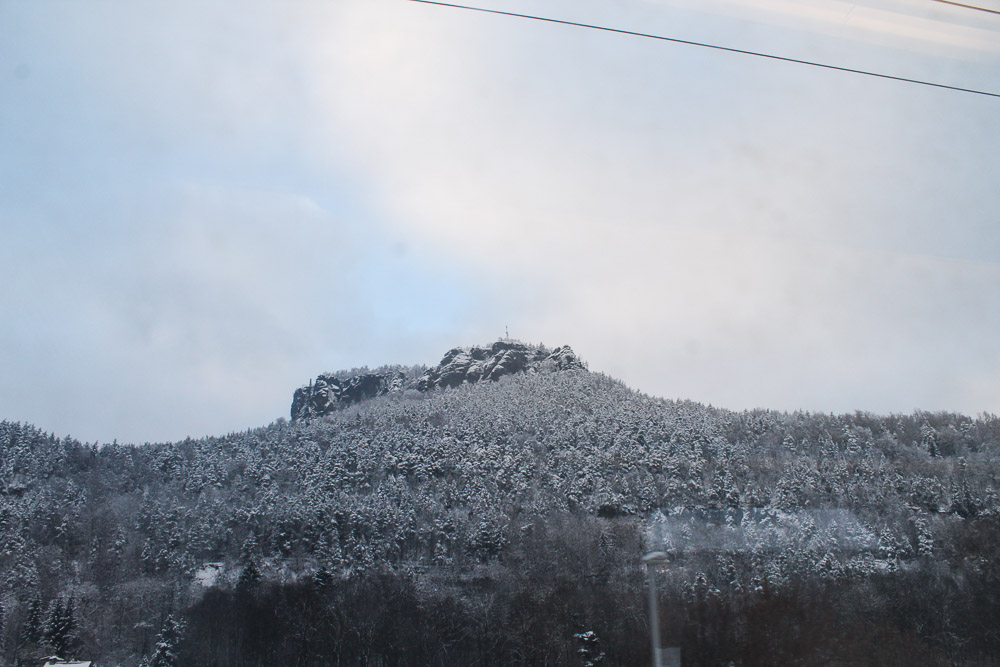
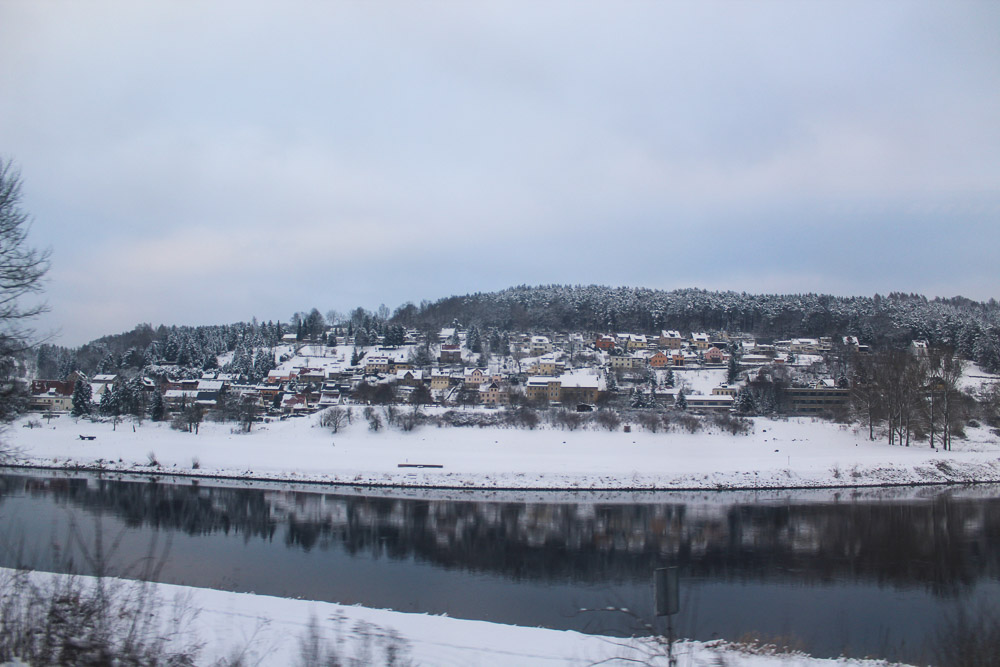
This entire locality is also known for stunning natural views, and Deutsche Bahn markets Bad Schandau station as a “National Park Station” in reference to the nearby Saxon Switzerland National Park. This National Park was created in the dying days of East Germany, and also transitions into the Bohemian Switzerland National Park on the Czech side of the border.
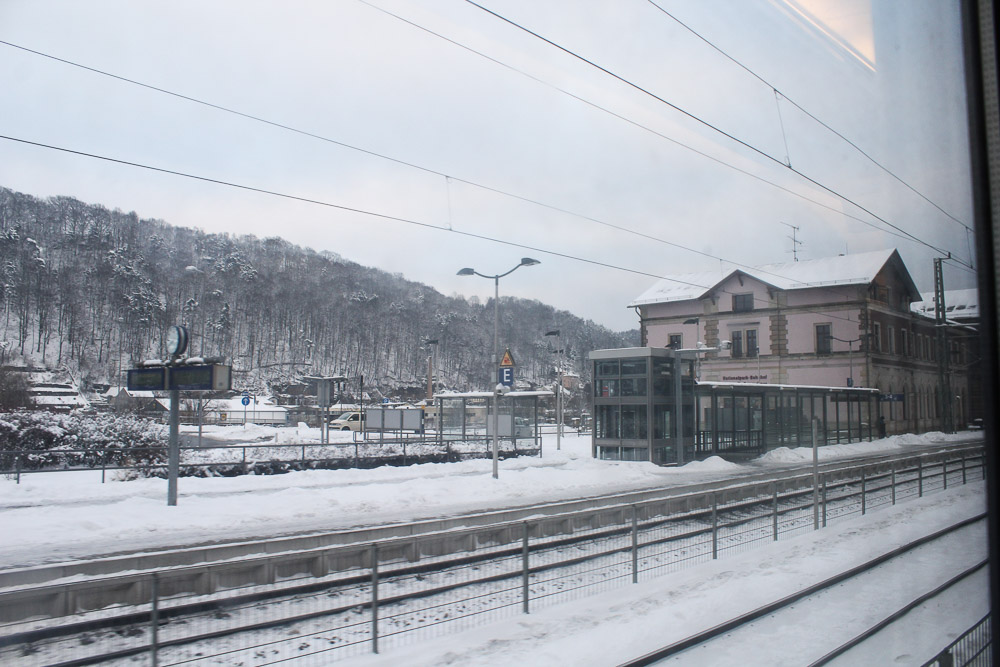
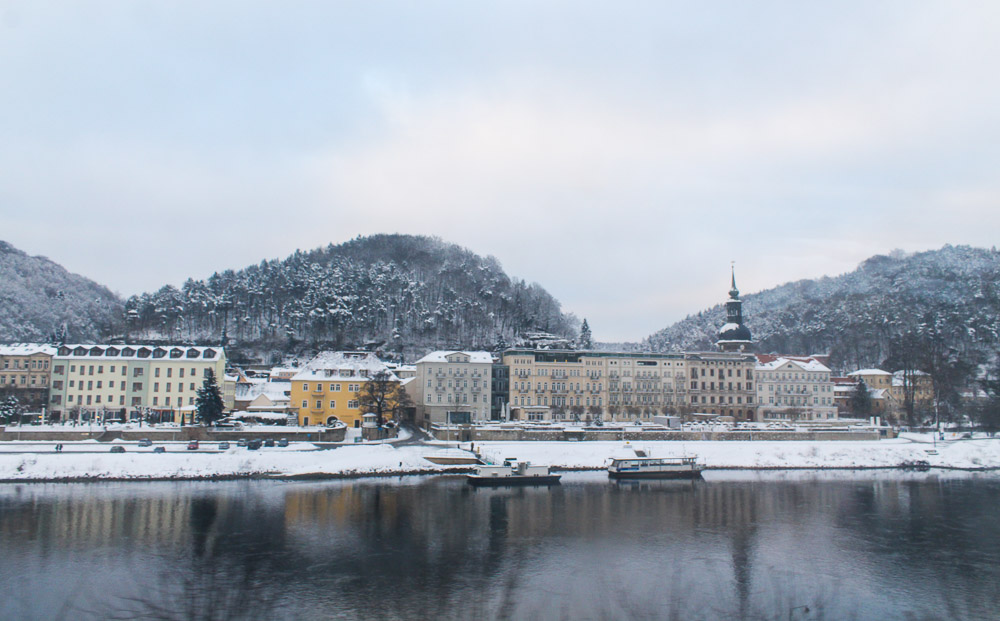
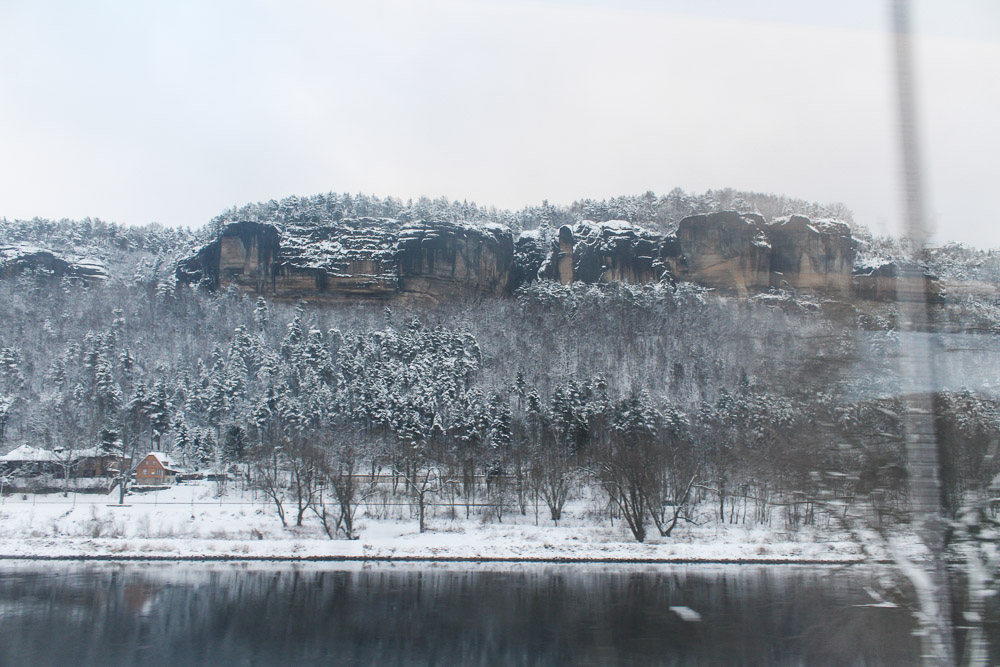
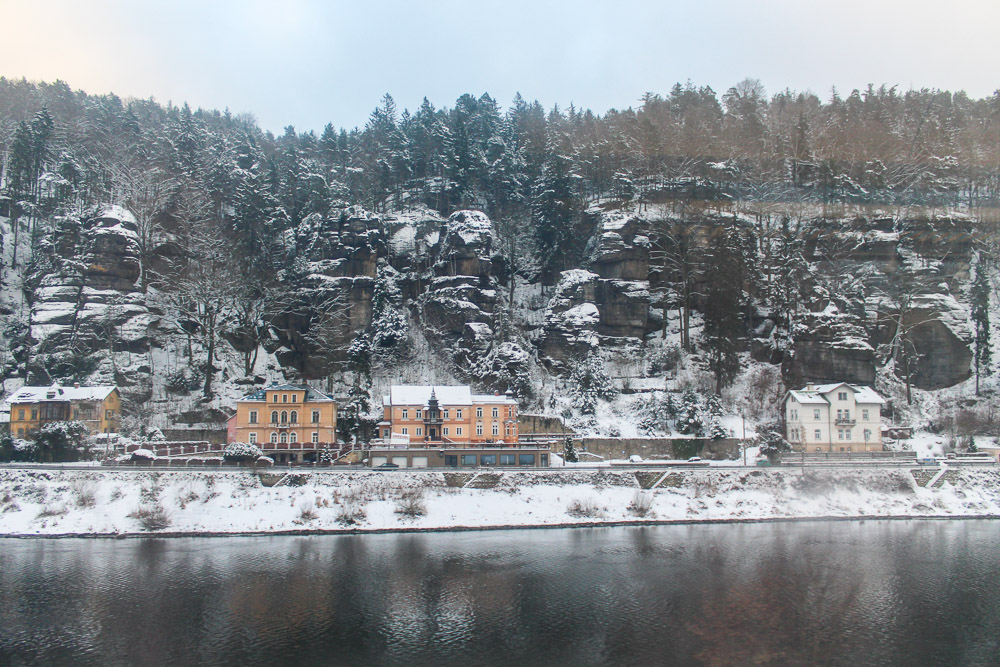
Bad Schandau station is also significant as it was previously a border crossing point between East Germany and socialist Czechoslovakia. Prior to the fall of the East German regime in 1989, officers of the deceptively simply named Ministry for State Security (Ministerium für Staatssicherheit) (better known as the “Stasi“) would often seek out “suspicious” people on the trains to Czechoslovakia and order them off at the Bad Schandau border crossing. This was because many tried to flee the Republic (Republikflucht) via Czechoslovakia.
The winter dusk soon fell as we sped along the River Elbe, giving us wonderful wintery views of the woods in the area, and the sky grew visibly darker as we crossed the border into the Czech Republic, or “Czechia” as it now wants to be known, or Bohemia to be region-specific.
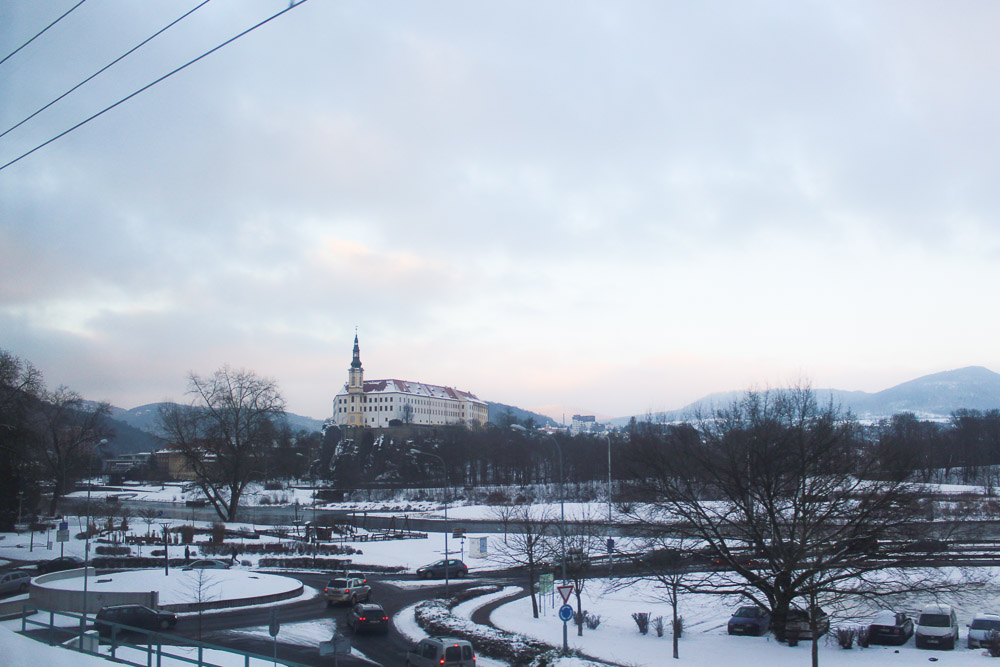
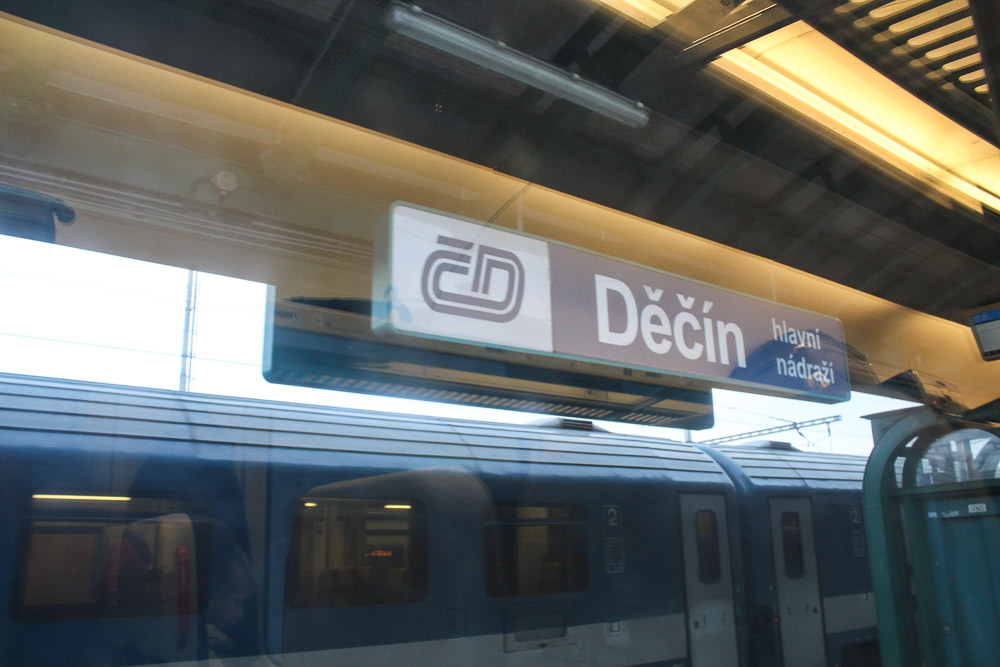
The winter sun set, and there wasn’t anything else to see. I took the opportunity to take a nap, and woke up shortly before entering Prague proper.
One thing to note about Prague is that it has 2 intercity stations - Praha-Holešovice and Praha hlavní nádraží, with the latter being the city's central station. There are some intercity services that terminate at Praha-Holešovice rather than Praha hlavní nádraží, but the hlavní nádraží is in the city centre while Holešovice is in the north of the city and a few Metro stops away from the city proper. Always be sure of your final destination.
Arrival at Praha hlavní nádraží
We pulled into Praha hlavní nádraží on time, and I took my time to grab a few more pictures of the now empty carriage and the train cars. It was a nice 4 hour train ride but it was starting to get tiring at the end. That lethargy soon faded as I stepped out into the biting cold of the Czech winter air.
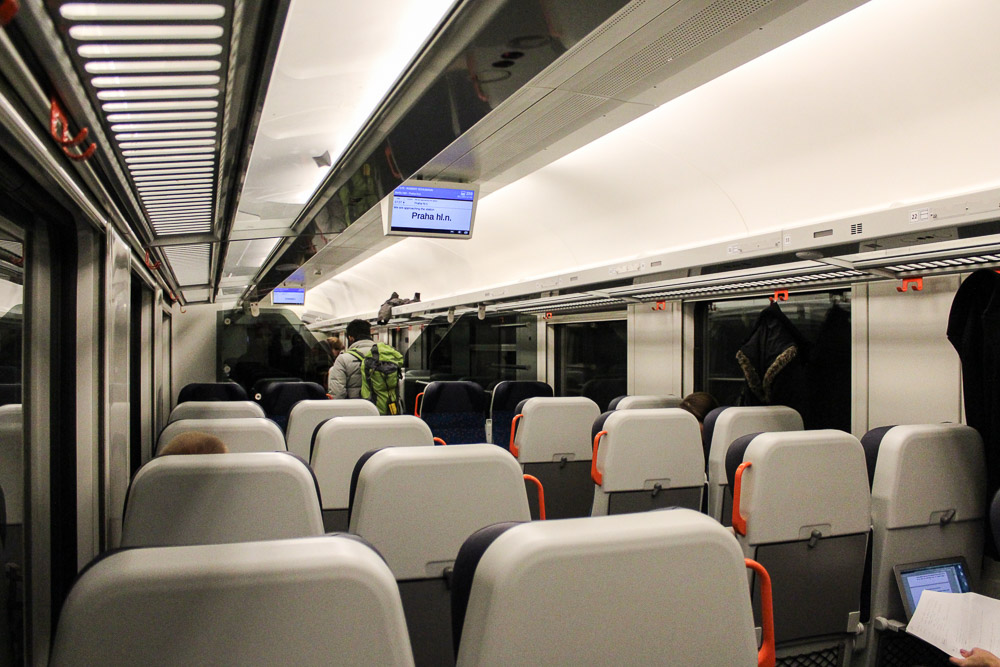
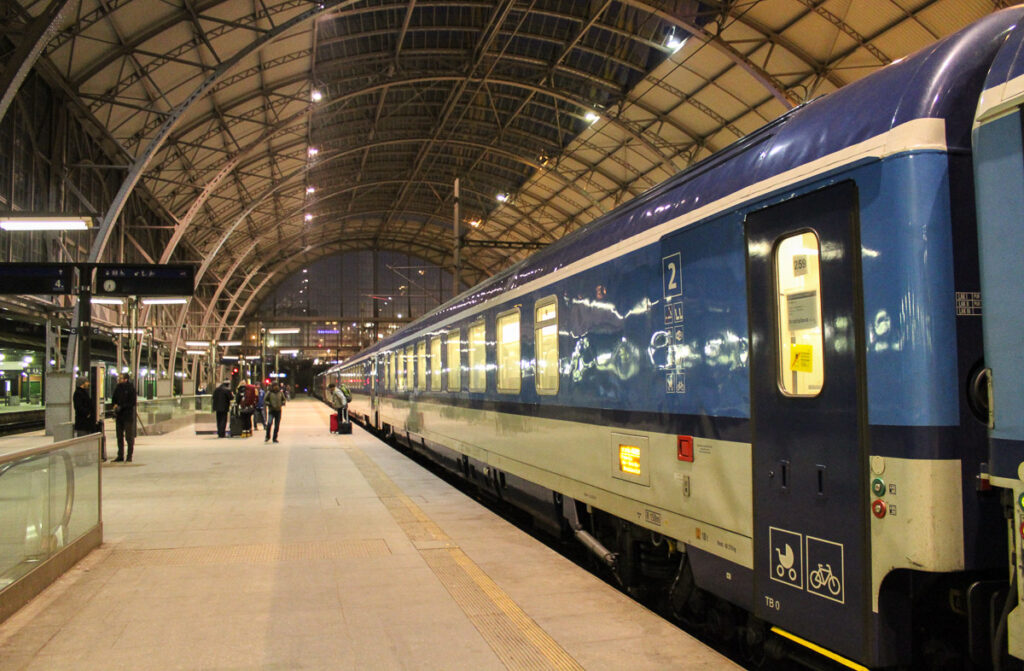
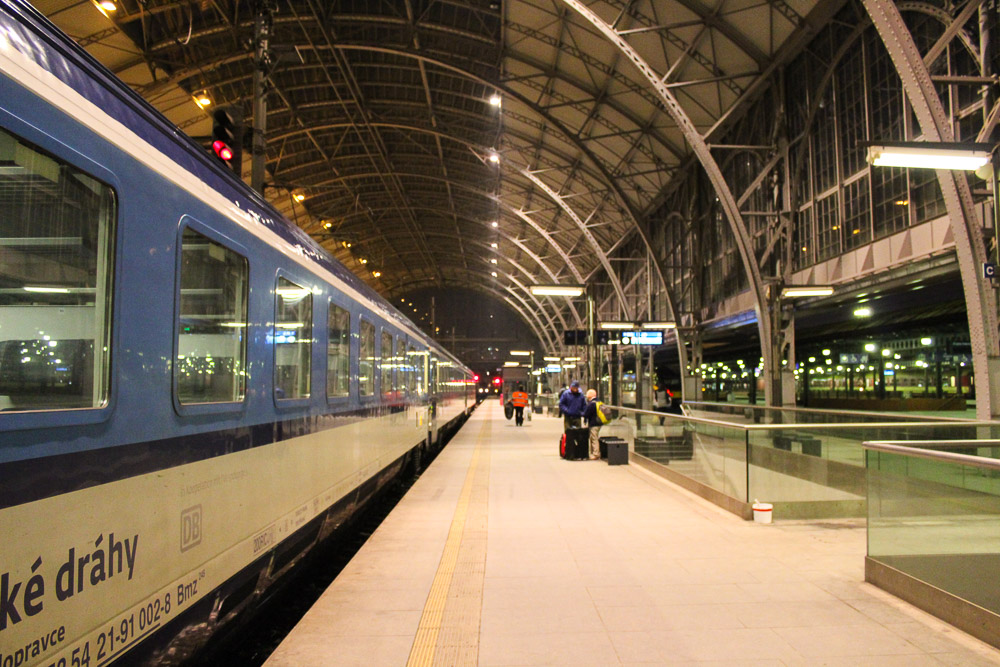
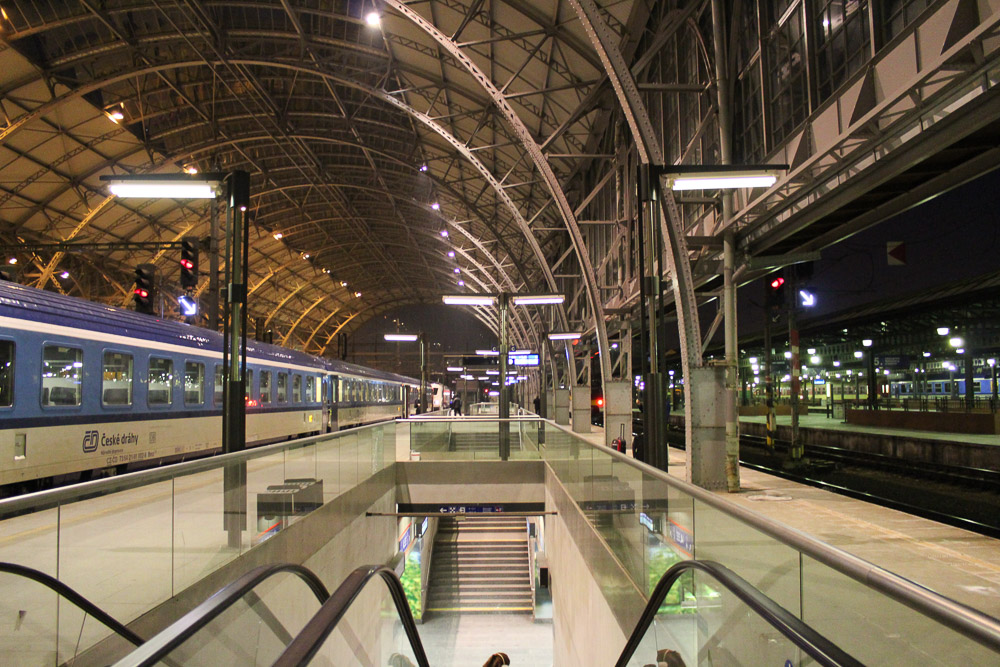
Final Thoughts
It was a good introduction to a standard European cross-border intercity service. The relatively short 4 hour train ride between two countries was also a testament to how compact Europe actually is, and the logistical potential that comes from upgrading rail infrastructure.
All-in-all, the service was nothing to shout about, but there wasn’t any negative experiences either. I’ll be happy to travel with Czech Railways in the future.
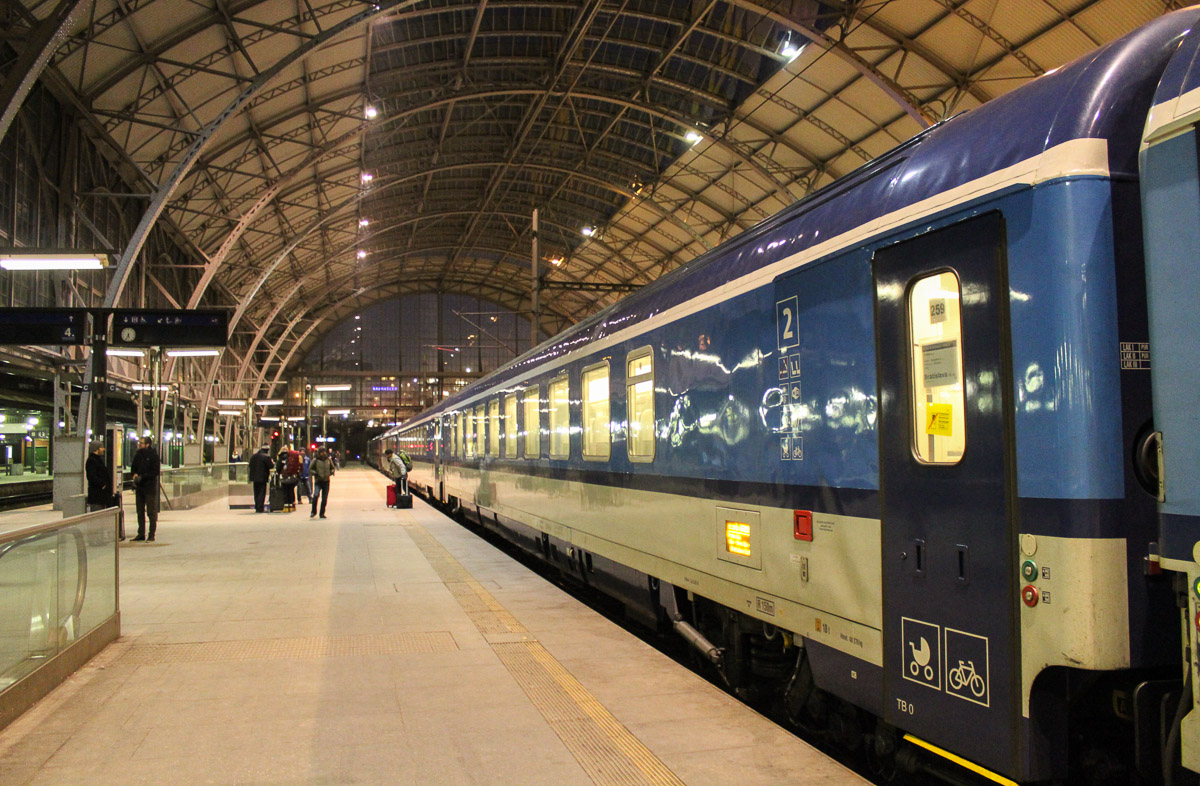
Comments
7 responses to “Czech Railways: Review of EC 175 “Robert Schumann” 2nd class (Berlin to Prague)”
[…] much as a ticket on the Enterprise to Dublin, and it was almost half that of my 2nd Class ticket on Czech Railways from Berlin to Prague. For perspective’s sake, it costs as much as a regular intercity ticket even in […]
[…] much as a ticket on the Enterprise to Dublin, and it was almost half that of my 2nd Class ticket on Czech Railways from Berlin to Prague. For perspective’s sake, it costs as much as a regular intercity ticket even in […]
[…] 2nd class seats onboard were identical to the Czech Railways 2nd class seats on the EC 175 service from Berlin to Prague that I was familiar with. These seats do not recline and are arranged in a 2-2 layout onboard. […]
Hello! Wonderful post! Thank you for the insight-enjoyable to read-
Cynthia
Hi Jon been following your blog and really appreciate your insight on all these trains and places. Thank you! Just need to ask you as we will be booking Robert Schumann EC174 train fr Prague to Berlin hbf. is the above head sufficient for us to place our carry on and medium size luggage? And if it’s not large enough a space, is it secure to place our luggages at the main luggage shelves which can be quite afr from where we are seated? Thanks in anticipation.
Hi John, thank you for viewing! When I travelled on the service I could fit my roller suitcase on the shelves above, though my suitcase in question is of the slightly smaller variant. I don’t think you’ll have any issues re size but as I took this journey more than a year ago I’m afraid I don’t really remember the exact capacity of the shelves. And you don’t have to worry about keeping your bags at the main luggage area as the train is quite safe and secure 🙂
[…] 1) Berlin to Prague on EC175 “Robert Schumann” […]